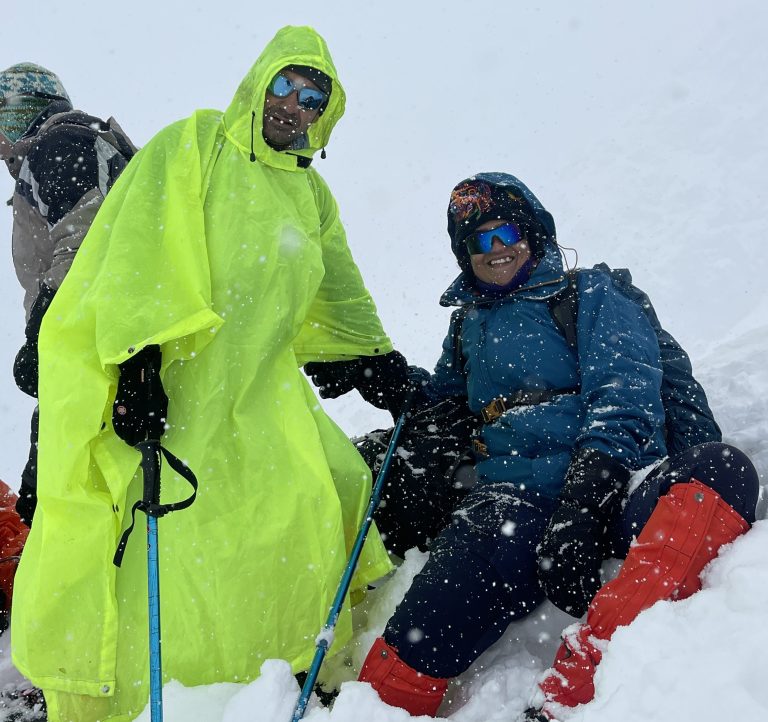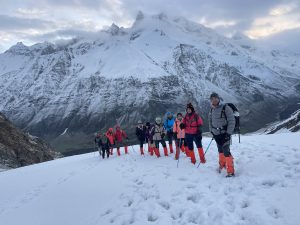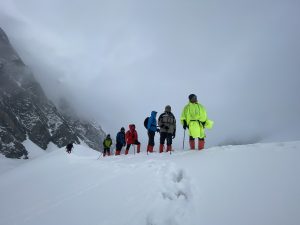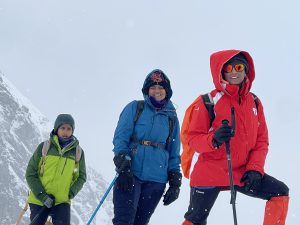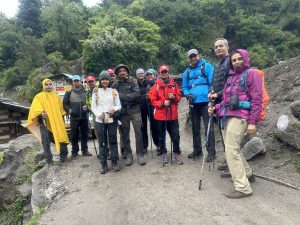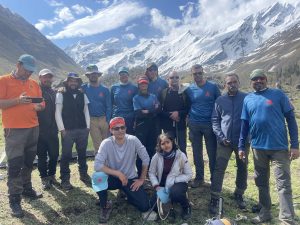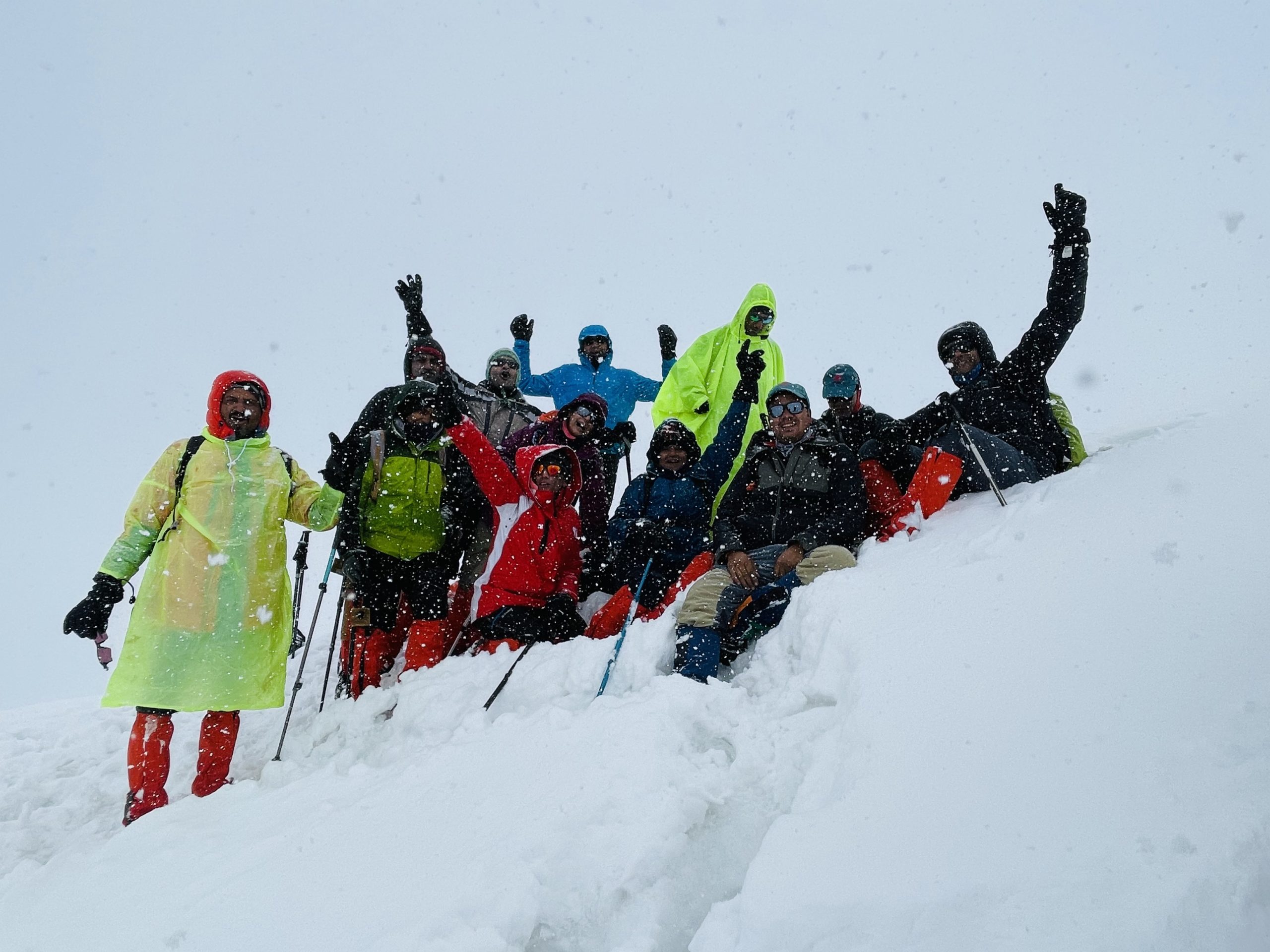
Rare Adventure in Big Mountains : Bali Pass
Work and domestic life are our priorities. But, I reckon, sometime must be set aside for travel off the beaten path. Being an outdoorsy type, I love sports, travel, and adventure. I make it a point to spend some time amidst the mighty, serene mountains every year. After a break in 2022, I was looking forward to a rare adventure in 2023 and an ace mountaineer friend suggested a trek to Uttarakhand’s Bali Pass.
There aren’t many treks like Bali Pass, that give one the raw grandeur of a Himalayan pass crossing. It’s an exhilarating trail, connecting Har ki Doon valley with Yamunotri. Almost an exploration on its own, the Pass traverses the confluence of the Tons River and Ruinsara lake, the undisturbed serenity of the Ruinsara Valley and the lush meadows of Devsu Thach.
Soon, greenery gives way to the alpine zone. At 16,207 ft, the Bali Pass offers a 360-degree panoramic view of three majestic peaks: Bandarpunch, Kalanag or Black Peak, and Swargarohini. This stunning view doesn’t come easy: this trek is classified as difficult by many and is only for experienced trekkers. Our team of 10-11 enthusiastic trekkers reached Dehradun on 31 May, and joined experienced trek-leader from Altitudes Expeditions, Anit Sah, and his team of superheroes. Calling undertake unimaginable tasks to make the trekkers comfortable and – most importantly – safe in all conditions. In the mountains, we not only face unusual weather, but also a complete shift in lifestyle, bereft of luxuries.
Day 1: Driving along the Tons and passing through Damta, Purola, Mori and Netwar villages, we headed for our first-day base Sankri. Soon, we lost mobile connectivity, and the feeling was liberating. For, instead of staring down at a glaring tiny screen, we were enjoying the panoramic view of the sun setting over the Greater Himalayan ranges.
Day 2: Following a filling breakfast, we reached a village named Taluka. It was an adventurous 11 km ride sitting atop a vehicle. The Govind Pashu Vihar National Park & Sanctuary’s motorable road ended here, and we began the trek on a gravel route alongside the gushing Supin river. We passed by plantations of the red-colored Himalayan superfood, amaranth, popularly known as cholai.
The trek was as lovely as the villagers welcoming us along the route lined up with walnut, pine, deodar, and maple trees. After a few hours, and after fording a few creeks, we espied the picturesque settlement of Gangad across the river. An hour later, the charming village of Osla emerged. Home to 200-odd households, it provides a glimpse into the Garhwali culture. We pitched our first camp at Seema, on the other side of the river. Despite the remoteness of the place, the food was delicious.
Day 3: Leaving human habitation behind, we continued following the river Supin. Tons, the largest tributary of the Yamuna, was formed by the confluence of Supin and Rupin near the hamlet of Netwar. An ascent through deodar trees led to Devsu Thatch, a lovely one-km meadow set against the rising Swargarohini mountains.Straight ahead, we could see Kalanag (Black Peak). Har Ki Doon Valley was on our left. The confluence of Har Ki Doon and Ruinsara rivers is located at its bottom. Descending from Devsu Thatch, we entered the Ruinsara valley. At dusk, we camped along a creek near the Roiltigad or Roiltia waterfall.
The weather continued to be challenging throughout our trek, with the rains and sunshine playing hide and seek. The higher we climbed, the lower dropped the temperature. But the team eagerly anticipated each day, looking forward to the beautiful views unfolding along the way.
Day 4: It was a little relaxed. In less than two hours, we reached Ruinsara Tal – a beautiful tarn which is one of the highlights of this trek. We noticed a significant shift in vegetation: birch and rhododendron trees replaced pine and fir trees. Also, snowfall took the place of rainfall, and we could see snow-clad mountains all around.
We were very excited about the climb ahead but were equally unsure about crossing the pass as, due to bad weather and large amounts of soft snow, most of the teams ahead were returning from the base camp. Our team lead told all of us that given the fitness of all the team members, we would try to reach as high as possible. Trust is the most important aspect when we are attempting any adventure activity, and we reposed full faith in the trekking company
Day 5: We started for Odari early in the morning so to reach before noon. We strolled down to the shallow riverbed, over to the opposite bank, and uphill to Thanga, another lovely meadow The Kyarkoti valley is on the left, close to Odari. The camp is usually pitched on a moraine below Bali Pass, but because of the inclement weather, we set it up a little before the usual place to avoid sleeping on the snow.
Despite the raging blizzard, the superheroes pitched the camp in a safe, comfortable area, protected from the chilly winds and heavy snowfall. Unlike at the previous camps where they were settled a little away, this time, the mules that carried our extra luggage were near us.
To devise a climb plan, the team leader and two members went on a recce. Up till now, we had been moving in three packs: fast movers, medium pacers and the slowest. On returning from the recce, they said that tomorrow all will climb together and asked us to stick together, taking one step and one breath at a time.
Day 6: Our trek resumed at 4 am. Donning warm clothing, complete with gaiters, we set off for the longest snow walk of the trek. The weather worsened, and visibility dropped. All we could see were the people ahead of us and followed in their footsteps. That literally meant each person would sink his or her feet into the deep prints made by the person ahead!
Initially, I was right behind the team leader, but noticing that walking deeper and deeper into the soft snow was tiring me, he repositioned me to the fourth position. Now, with the footprints of three people ahead of me, the snow was a little firmer. We continued through the blizzard, the advice of the team leader the previous evening crisscrossing our minds.
We crossed the point from where other teams had returned. That was an accomplishment and we kept climbing. In almost zero visibility, we put each foot forward into the footstep of the person in front. And at last, we reached the highest point.
Though we were not able to cross the Pass, we were proud to have reached the highest point. Given the amount of soft snow accumulated on the route, we decided to spend some time there. We clicked pictures, inhaled the rarefied air, and then embarked on the return trek. Continuous rains had made the way down slippery, and our knees felt the pressure.
Two nights and three days later, we were back in Sankri, where we all were looking forward to a much-needed shower. But there was no way to heat water and the weather was freezing. Some of us, including me, still dared to take a cold-water shower. The next day, we reached Dehradun, and subsequently flew back home.
By
Trupti Dalal
